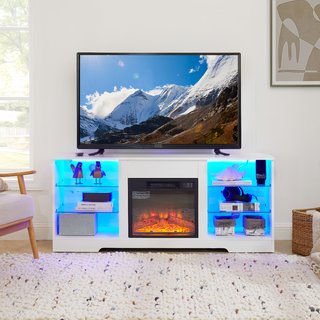The Complete Guide to Television Stands: Style, Function, and Selection Tips
Wiki Article
A television stand is a lot more than just a place to set your TV — it plays an important role inside the look, feel, and functionality of one's living space. Whether you're establishing a home theater, upgrading your family area, or organizing a bedroom TV area, the best TV stand can tie the whole room together while offering storage and cable management solutions.
In this article, we’ll explore infant when choosing a 75 inch tv stand, the most used styles, and how to match anyone to your space and lifestyle.

What Is a Television Stand?
A television stand (often known as a TV console or media unit) is really a piece of furniture meant to support your television and frequently other media devices like sound systems, game consoles, and streaming devices. In addition to holding your TV, many stands include drawers, shelves, and cabinets for storage and organization.
Key Factors to Consider
When shopping for a TV stand, you must take into account several critical factors:
TV Size and Weight
Always choose a stand that could support the width and weight of the television. Most stands list a maximum screen size (in inches) and a weight limit.
Room Size and Layout
The sized the room will influence how big or small your stand needs to be. A large stand in a compact room thinks overwhelming, while a tiny stand it a large room might appear underwhelming.
Material and Build Quality
Common materials include wood, metal, glass, and engineered wood. Solid wood is durable and classic, while metal and glass will offer a more modern touch.
Storage Needs
If you have lots of gaming systems, streaming devices, DVDs, or remotes, locate a stand with ample storage like shelves, drawers, or cabinets.
Cable Management
A good TV stand should offer built-in cable holes or wire channels to disguise cords and things neat and safe.
Style and Decor
Choose a stand that complements your interior decorating — from modern minimalist to rustic farmhouse or industrial chic.
Popular Types of Television Stands
Open Shelf TV Stands
Minimalist in design, these stands are ideal for small spaces and invite for easy use of devices.
Console TV Stands
These typically include drawers, doors, and shelves — perfect for those needing storage space.
Corner TV Stands
Designed to suit neatly into corners, they maximize space in compact rooms.
Entertainment Centers
Larger units that will include bookshelves and display space, great for creating a full media wall.
Floating TV Stands
Mounted straight to the wall, these modern stands develop a sleek, space-saving look.
Style Tips for TV Stands
Modern: Look for clean lines, glossy finishes, and materials like glass or metal.
Traditional: Rich woods, carved details, and classic silhouettes are very effective in traditional interiors.
Rustic/Farmhouse: Weathered wood and barn-style doors add charm and warmth.
Industrial: Combines wood and metal which has a raw, urban aesthetic.
Tips for Placement and Use
Eye-Level Viewing: Your TV screen should be at eye level when seated, typically around 42 inches from the floor.
Balance: The stand ought to be wider compared to TV to make certain stability and balanced visuals.
Safety: Anchor the two stand along with the TV, especially in homes with children or pets.
A television stand is both a functional and aesthetic addition to your house. With the proper choice, it is possible to enhance your viewing experience, improve room organization, and express your interior style. Whether you will need something sleek and modern or cozy and traditional, there exists a perfect TV be noticeable there to suit your home.